Gujarati Dal Recipe
Feb 05, 2022, Updated Apr 20, 2022
Tangy, sweet and spicy, this Gujarati Dal is comfort food at it's best. This soupy dal is best enjoyed with rice!
This post may contain affiliate links. Please read our disclosure policy.
Sweet, spicy and tangy, this Gujarati Dal is comfort food at it’s best! This thin consistency dal is tempered with lots of spices like cinnamon, cloves, cumin, mustard and flavored with ginger, jaggery, lime juice. Best enjoyed with plain rice.
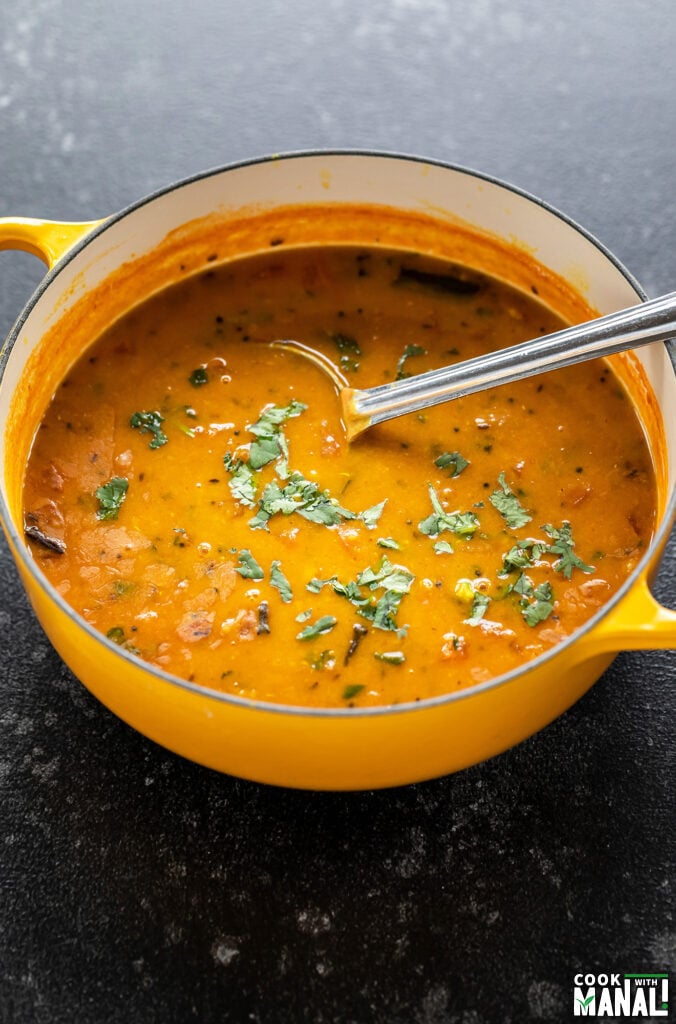
As someone who grew up eating dal everyday of her life, it still is (and will always be) an integral part of my diet and life. I cannot do without eating dal at least 2 times a week. That’s bare minimum!
Sure, I do not cook it everyday like it was in my house but it’s my comfort food and I need it every week. There’s so much variety when it comes to dal (like green moong, whole masoor dal to name a few). There are so many different types of lentils and each lentil can be prepared in several ways.
I didn’t grew up eating Gujarati Dal (for those who aren’t aware, Gujarat is a state in western part of India) but it has become one of my favorites in the past few years. I grew up eating the same lentil – toor dal/arhar dal everyday but it was cooked in a very different way in my house. There were no spices added and it only had a simple tempering of cumin seeds and sometimes garlic. It was really that basic.
When I first tried Gujarati Dal (and this was many years ago on a trip to Gujarat), I instantly liked it. It was spicy, tangy and sweet and paired so well with all the sabzis (vegetables) and rice. I would call it khatti meethi dal which literally translated to sour and sweet dal.
Now, I make Gujarati Dal often in my kitchen and it gets over in no time. Sarvesh is always happy when I make this dal so that’s an added bonus!
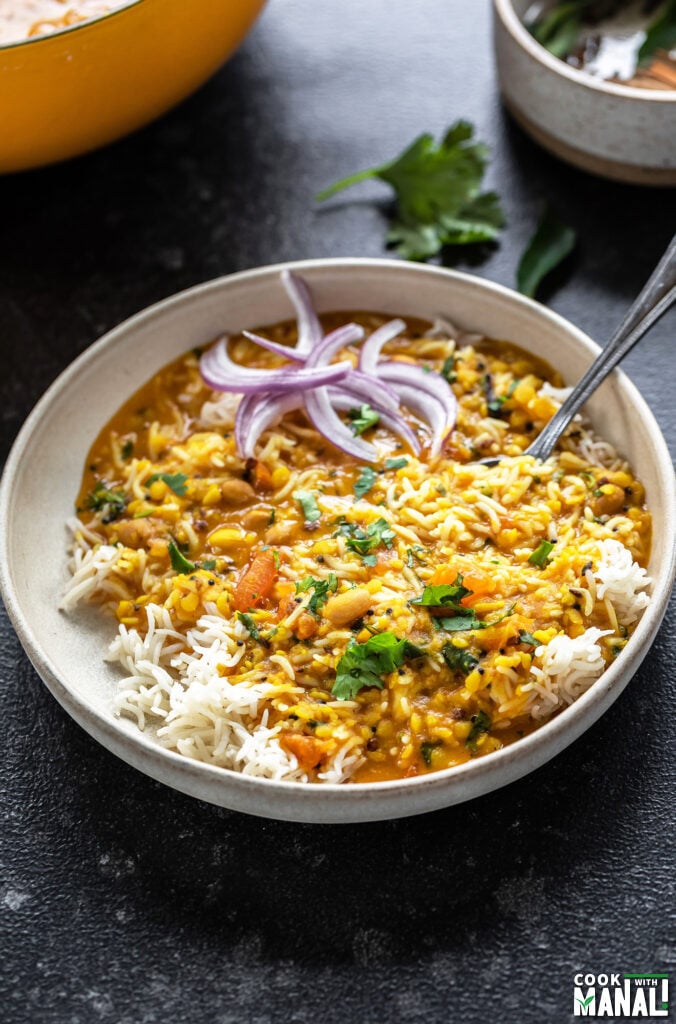
Consistency of Gujarati Dal
The consistency of Indian dal often confuses people, especially my readers who are from US and those who didn’t grew up eating it.
The confusion comes from the fact that most dal on the menu in Indian restaurants in the US are thick. But there’s no one consistency when it comes to dal in India. Every state, every region of India will make it differently and India is such a large country so the cuisines and method of making dals also vary widely.
This Gujarati Dal (which is made in the state of Gujarat and hence the name) has quite a thin consistency. It’s like milk consistency so don’t worry if this looks too thin to you. It is supposed to be thin. It does thicken as it cools down. My everyday dal that mom made was also similar consistency so I am very used to this consistency dal. But I thought I would put a note here in case this confuses some of you.
Ingredients for Dal
The ingredient list for this dal can be divided into 2 parts: the dal itself and the tadka (tempering).
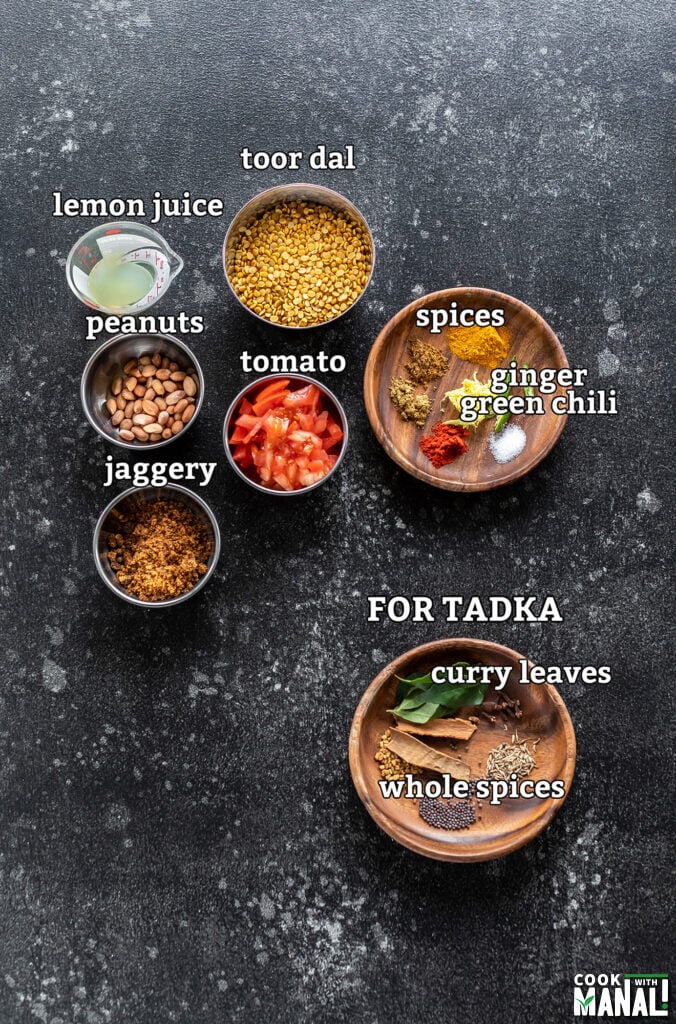
For the Dal
Toor Dal/Arhar Dal: this dal is made with toor dal which is also known as arhar dal or pigeon peas lentil. You can find it at any Indian grocery store. If you don’t have toor dal, you can definitely use moong or masoor as well.
Flavoring: this Gujarati Dal is flavored with ginger, tomatoes and green chilies. If you are not a fan of tomatoes, you can simply skip it.
Spices: the dal gets its spicy flavor from garam masala, red chili powder, the tanginess from lime juice and the sweetness from jaggery. Tamarind can also be added for the tang in place of lemon juice.
Peanuts: boiled peanuts are added to this dal which gives it a nice texture. I usually boil the peanuts along with the dal in the pressure cooker. You can definitely skip the peanuts if you are not a fan or want to make this nut-free.
For the Tadka
The tadka is made with bunch of whole spices like cinnamon, cloves, cumin seeds, mustard seeds, fenugreek seeds and curry leaves!
Step by Step Instructions
1- To a pressure cooker, add 1 cup toor dal/arhar dal along with 1 teaspoon salt, 3/4 teaspoon turmeric powder and 3 cups of water. Add 1.5 tablespoon peanuts to a small steel bowl and place it in the center of pressure cooker. You can also tie the peanuts in a muslin cloth.
2- Cook for 7 to 8 whistles on medium-high heat. Let the pressure release naturally. If using an Instant pot, pressure cook 8 minutes on high pressure with natural pressure release.
3- Open the pressure cooker, carefully remove the bowl of peanuts using a pair of tongs and set aside.
4- Add 2 to 3 cups more water (adjust according to consistency preference, Gujarati dal is supposed to be on the thinner side, so I recommend adding 3 cups water here).
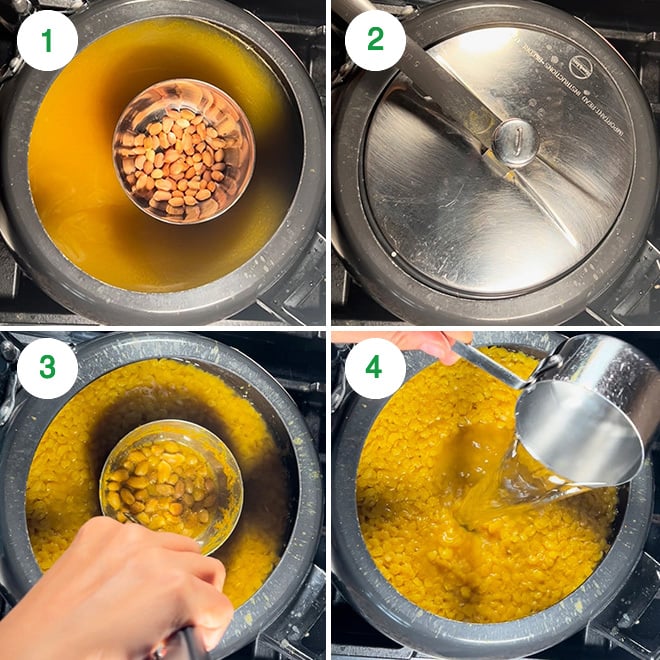
5- Using an immersion blender, blend the dal until it’s uniform and you see no dal particles.
6- At this point, I transferred the dal from the pressure cooker to a pot on medium heat but you don’t have to do it. You can do rest of the steps in the pressure cooker as well. Add 1/3 cup chopped tomato, 1 teaspoon grated ginger and 1 sliced green chili to the dal.
7- Now, add the following:
- 2 & 1/2 tablespoons jaggery powder (or use 1 small piece of jaggery)
- 3/4 teaspoon coriander powder
- 1/4 teaspoon garam masala
- 1/4 teaspoon red chili powder (add more to taste)
- 1/2 teaspoon Kashmiri red chili powder
- remaining 1/2 teaspoon of salt (adjust to taste)
8- Give everything a good stir and let it simmer for 10 minutes. Meanwhile make the tadka.
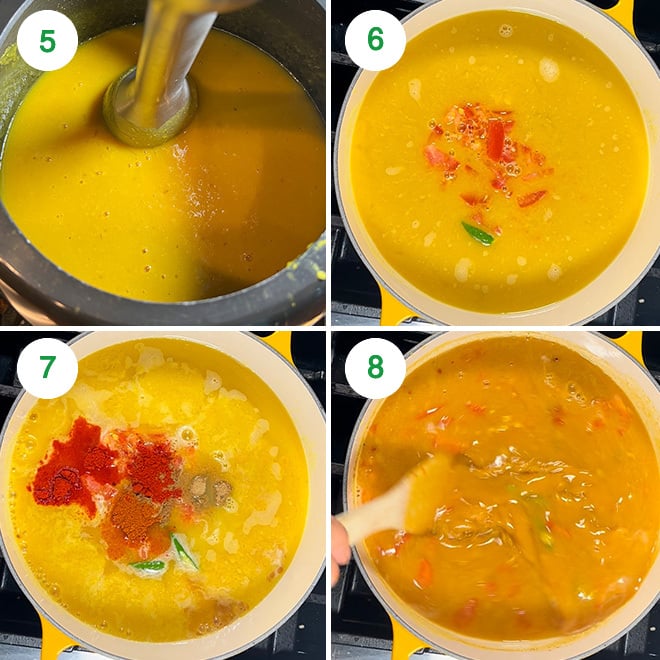
9- To make the tadka, heat 2 tablespoons ghee (or use oil) in a small pan on medium heat. Once hot, add the following:
- 1/2 teaspoon cumin seeds
- 1/2 teaspoon mustard seeds
- 1/2 teaspoon fenugreek seeds
- 1/4 teaspoon hing
- 4 cloves & 1-inch cinnamon stick
Let the seeds sizzle and mustard seeds pop.
10- Add in the curry leaves. They will splutter a lot so move away from the pan as soon as you add the curry leaves.
11- Pour the tadka over the pot of simmering dal.
12- Add the lemon juice and also the boiled peanuts back into the dal. Garnish with cilantro and simmer 2 more minutes! Serve piping hot.
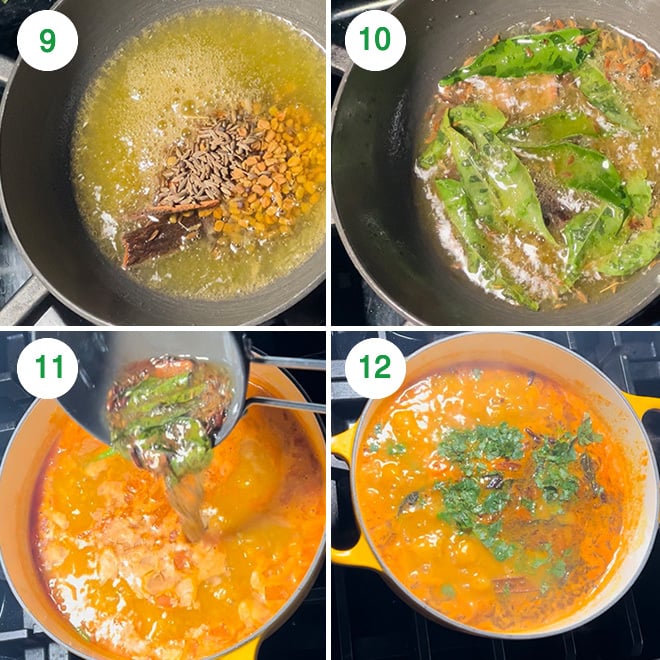
Serving Suggestions
The dal is best enjoyed with plain white rice. Some other options are to serve this dal with:
You can also serve it as a part of thali along with sabziz, Gujarati kadhi etc.
Cooking Dal on Stove-top
If you don’t have a stove-top pressure cooker or Instant pot, you can soak the lentils for 2 to 4 hours. Then drain and rinse them and transfer to a pot with around 3 cups water.
Cook on medium heat until the lentils are completely cooked. This will take around 30 minutes.
Instant Pot Version
Add the dal along with salt and turmeric and the peanuts to the steel pot of your Instant Pot. Close the lid and cook on high pressure for 8 minutes. Let the pressure release naturally.
Then press the sauté button and do the rest of the steps on sauté mode. Make tadka in a separate pan and pour over simmering dal.
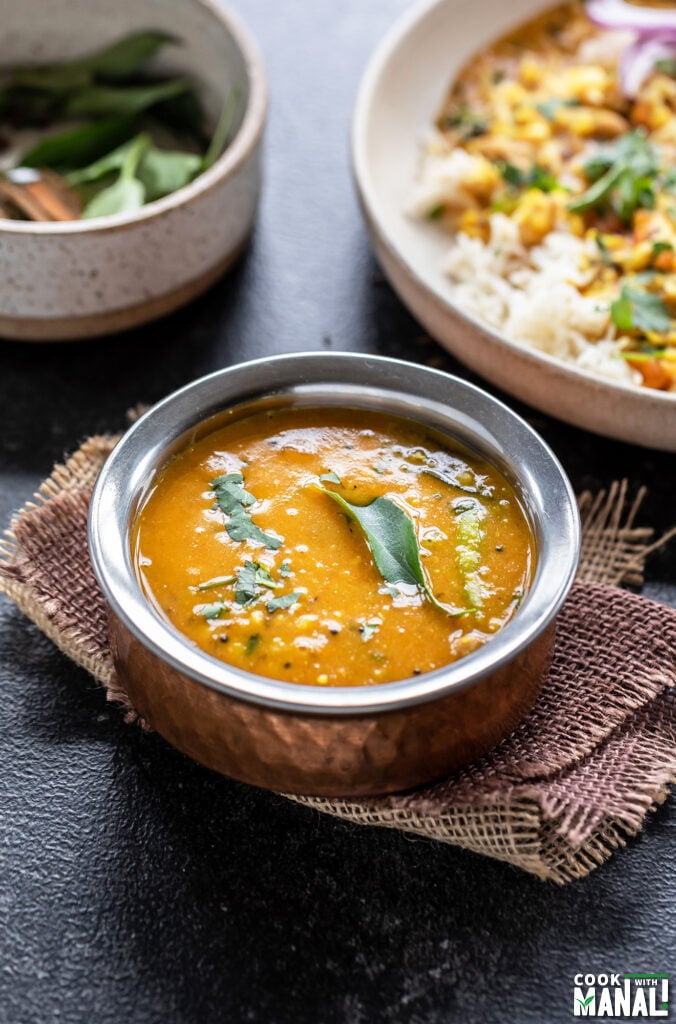
Vegan Version
This dal is vegan as such except the use of ghee in the tadka (tempering).
To make this gujarati dal vegan, just replace the ghee with oil. Rest of the steps and ingredients will remain same.
Tips & Notes
- Leftover dal can be stored in the refrigerator for up to 2 days. The consistency of dal will thicken so you will need to add water while re-heating. You can re-heat in microwave or in a pan on stove-top.
- If you want to store dal for even longer time, you can freeze it in a freezer safe bag.
- Skin hing (asafoetida) to make this recipe gluten-free.
- This is a thin consistency dal, so keep that in mind while making the recipe.
If you’ve tried this Recipe then don’t forget to rate the recipe! You can also follow me on Facebook, Instagram to see what’s latest in my kitchen and on YouTube to watch my latest videos.
Gujarati Dal Recipe
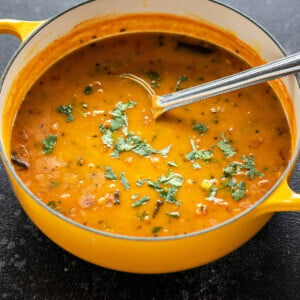
Ingredients
- 1 cup toor dal also known as arhar dal/pigeon peas lentil
- 1.5 teaspoon salt divided, to taste
- 1.5 tablespoons peanuts raw
- 3/4 teaspoon turmeric
- 5-6 cups water divided, 40-48 oz
- 1/3 cup chopped tomato
- 1 teaspoon grated ginger
- 1 green chili sliced, add more to taste
- 2.5 tablespoons jaggery powder or a small piece of jaggery
- 3/4 teaspoon coriander powder
- 1/4 teaspoon garam masala
- 1/4 teaspoon red chili powder add more to taste
- 1/2 teaspoon Kashmiri red chili powder not hot, added for color
- 2 tablespoons lemon juice
Tempering/Tadka
- 2 tablespoons ghee or oil
- 1/2 teaspoon cumin seeds
- 1/2 teaspoon black mustard seeds
- 1/2 teaspoon fenugreek seeds
- 1/4 teaspoon hing asafoetida, use gluten-free hing to make this gluten-free
- 4 whole cloves
- 1 inch cinnamon stick
- 8-10 curry leaves
- cilantro chopped, to garnish
Instructions
- To a pressure cooker, add toor dal/arhar dal along with 1 teaspoon salt, 3/4 teaspoon turmeric powder and 3 cups of water. Add 1.5 tablespoon peanuts to a small steel bowl and place it in the center of pressure cooker. You can also tie the peanuts in a muslin cloth. Cook for 7 to 8 whistles on medium-high heat. Let the pressure release naturally. If using an Instant pot, pressure cook 8 minutes on high pressure with natural pressure release.
- Open the pressure cooker, carefully remove the bowl of peanuts using a pair of tongs and set aside.
- Add 2 to 3 cups more water (adjust according to consistency preference, Gujarati dal is supposed to be on the thinner side, so I recommend adding 3 cups water here). Using an immersion blender, blend the dal until it's uniform and you see no dal particles.
- At this point, I transferred the dal from the pressure cooker to a pot on medium heat but you don't have to do it. You can do rest of the steps in the pressure cooker as well. Add the chopped tomato, grated ginger and sliced green chili to the dal.
- Now, add jaggery powder, coriander powder, garam masala, red chili powder, Kashmiri red chili powder and remaining 1/2 teaspoon of salt (adjust to taste). into the dal. Give everything a good stir and let it simmer for 10 minutes. Meanwhile make the tadka.
Tadka/Tempering
- To make the tadka, heat 2 tablespoons ghee (or use oil) in a small pan on medium heat.
- Once hot, add the cumin seeds, mustard seeds, fenugreek seeds, hing, cloves & cinnamon stick. Let the seeds sizzle and mustard seeds pop. Add in the curry leaves. They will splutter a lot so move away from the pan as soon as you add the curry leaves. Remove pan from heat.
- Pour the tadka over the pot of simmering dal. Add the lemon juice and also the boiled peanuts back into the dal. Garnish with cilantro and simmer 2 more minutes! Serve piping hot.
Instant Pot Version
- Add the dal along with salt and turmeric and the peanuts (place over trivet in a small bowl) to the steel pot of your Instant Pot. Close the lid and cook on high pressure for 8 minutes. Let the pressure release naturally.Then press the sauté button and do the rest of the steps on sauté mode. Make tadka in a separate pan and pour over simmering dal.
Notes
- Leftover dal can be stored in the refrigerator for up to 2 days. The consistency of dal will thicken so you will need to add water while re-heating. You can re-heat in microwave or in a pan on stove-top.
- If you want to store dal for even longer time, you can freeze it in a freezer safe bag.
- Skin hing (asafoetida) to make this recipe gluten-free.
- This is a thin consistency dal, so keep that in mind while making the recipe.
- If you don’t have jaggery, you can use sugar in place.
Nutrition
Nutrition information is automatically calculated, so should only be used as an approximation.

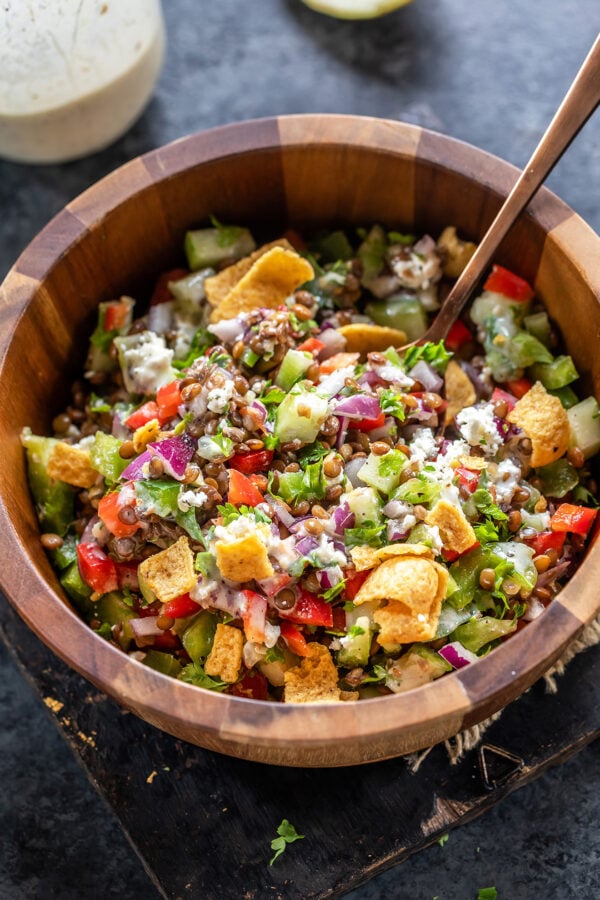
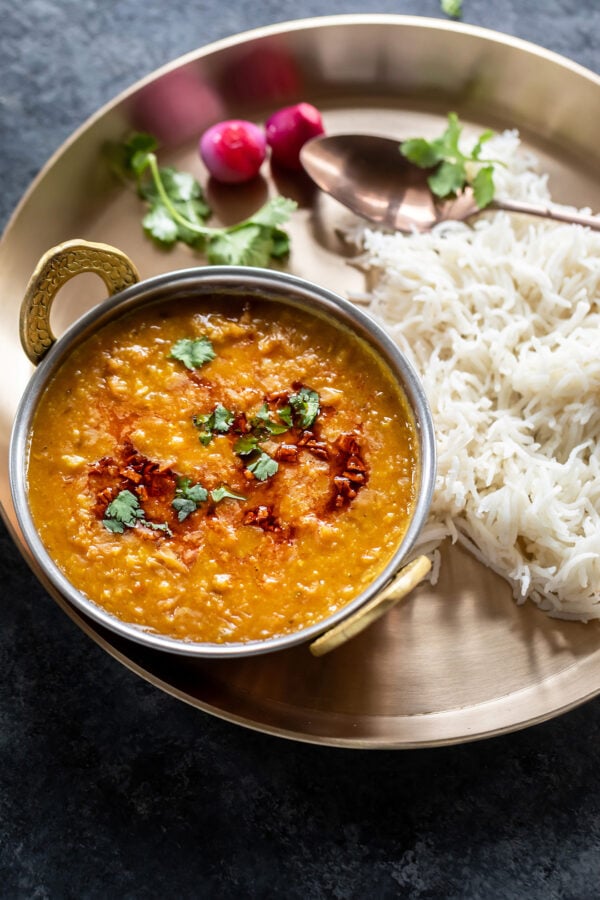
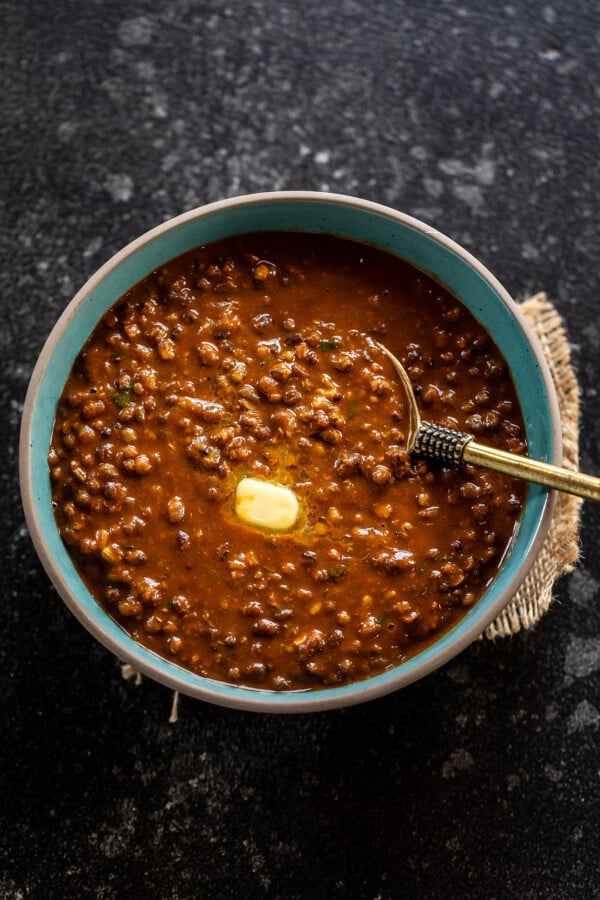
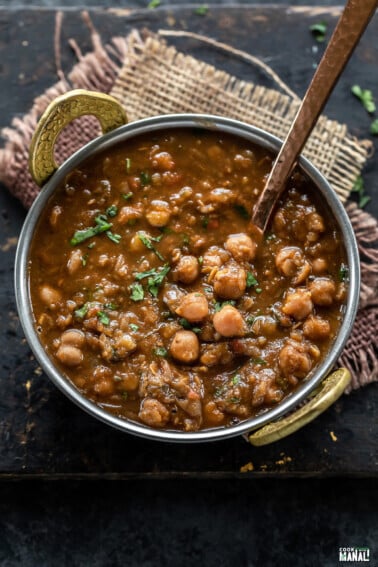









This dal recipe it’s simply delicious 😋!
Thank you so much for sharing this recipe with us!
My husband is gujarati and I’m romanian and this is first recipe of dal that he was very happy about 😁 as I never could get the consistency right.
yay so glad to hear that!
Very Homemade and with minimum of masalas
Hello, Manali,
Is it okay to use roasted peanuts instead of raw peanuts? That is what I happen to have at this time. Please let me know. Thanks in advance.
I admire your talent for writing the recipes so simply and precisely. They yield consistently delicious results every time. Thank you!
Sincerely,
Jaya John
Hi Jaya, we need boiled peanuts for this recipe which works better with raw peanuts but you can try with roasted peanuts. Or you can also skip them.
This recipe was easy to follow and it taste just like my mom’s Gujarati daar. Absolute comfort food. Thanks for posting!
I’ve made this recipe before and it was delicious! My partner and I want to make it again, but curry leaves are so hard to come by in my neck of the woods; are these necessary, or is there a good substitute?
there isn’t a good substitute, you can skip it. It will still be good 🙂
Hello Manali!
I wanted to ask is there a substitute for Jaggery I can for this lovely recipe of Gujarati Daal? I don’t like jaggery in my food..
Thanks for your response in advance,
Rekha Schultz
use some sugar
What did u do with peanut
Step 12: Add the lemon juice and also the boiled peanuts back into the dal.
Great recipe! I’ve tried a few of your recipes now, and they are all fantastic! They are all part of my regular rotation. I look forward to trying more! Thank you!
Manali, you never fail to replicate the taste in all your recipes. I have never been disappointed. I tried to make this dal today with a dal mix I already had in the Fridge and the result reminded me of the warm comforting dal in gujrathi temples. This is my first time making it. It tastes authentic.
For everyone else looking to make this dish, pls don’t skip the tempering, it totally transforms the dish. The taste before and after tadka was very different. After the tadka, the dal was very flavorful and sort of stiched together all the other flavors going for it.
Thanks for the lovely feedback Rita 🙂
Very nice 🙏
So yummy! Thanks. I received your book as a gift a while ago and we have loved everything I have cooked from it 😊
Thank you, I am so glad to know! 🙂
I don’t like sweet daal can I skip jaggery
you can but little bit of sweetness is what makes gujarati dal different from other dals 🙂
Truthfully, I wasn’t sure what to expect from this recipe with the absence of tamasic ingredients.
I’m pleased to say this dal is truly delicious…..the combination of jaggery and lemon juice made for a very unique taste and a pleasant change from more heavily spiced lentil recipes. Will make this again, for sure. Thank you, Miss Manali!
Served with rice and the obligatory scoop of hot lime pickle on the side. (Ohhhhh, I would trade my kingdom for a hot lime pickle recipe)
it’s such a flavorful dal! I love it! Thanks for trying Dave!
So yummy. Definately a keeper!
Great 👍
Thank you Manali
Please keep up the great work 👍
God bless you
Please proof-read / fix the grammar and spelling. You’re a professional, published writer.
Example – …”Spices: the dal gets it’s spicy flavor…”
Its, not it’s.
Thank you, I do proof read but even then mistakes happen. English is not my first language, I try my best.
Hi, Manali! I just made this and it is scrumptious! I used dried red chilis since green chilis don’t like me. Somehow a stray apostrophe made no difference to your delicious recipe! Thanks so much for bringing joy to people!
How many languages do you have mastery over? Manali was being extremely polite, go take a long run off a short pier Joe King!
Joe King, you must be a brilliant cook and quite a bored person in that you are focused on grammar / punctuation rather than on the delicious recipes Manali shares with all of us. You might try a couple of these and see how good they are. By the way, how are your skills in languages which aren’t native for you?
Wow, Joe, if that misplaced apostrophe really messed up the outcome of your dal, that’s pretty pitiful. No need to troll and post useless comments.
Manali, your wonderful recipes have been so helpful for me, I appreciate all that you share!!
Thanks Misha!
Get a life, Joe!
Joe, you are a joke.
Hi manali I don’t have a pressure cooker can you give any direction on how to cook the dal and peanuts on the stove ?
soak the dal for 4 hours and then cook on stove top until it’s very soft, will probably take around 20-30 minutes. And boil the peanuts separately.
Masoor dal (bright red-orange color when raw) cooks much better on stove top. I find it difficult to get creamy consistency with toor dal on stovetop even with soaking it overnight. Though the nutrition might be different, the slight taste difference between the two is hardly noticeable to me. This recipe is wonderful with either! I have added it to my winter dal rotation 🙂
Manali,
My daughter turned me on to you and she loves your recipes. but I have a quick question. I am on a restricted diet (carbs) so when you have the nutrition information, for example for dal, can you detail out what portion size you mean?
Thank you
Manoj
The nutritional information is only an estimate calculated automatically by the recipe plugin. It divided the total number of calories by the amount of servings I put. For accurate nutritional information, please consult a nutritionist.